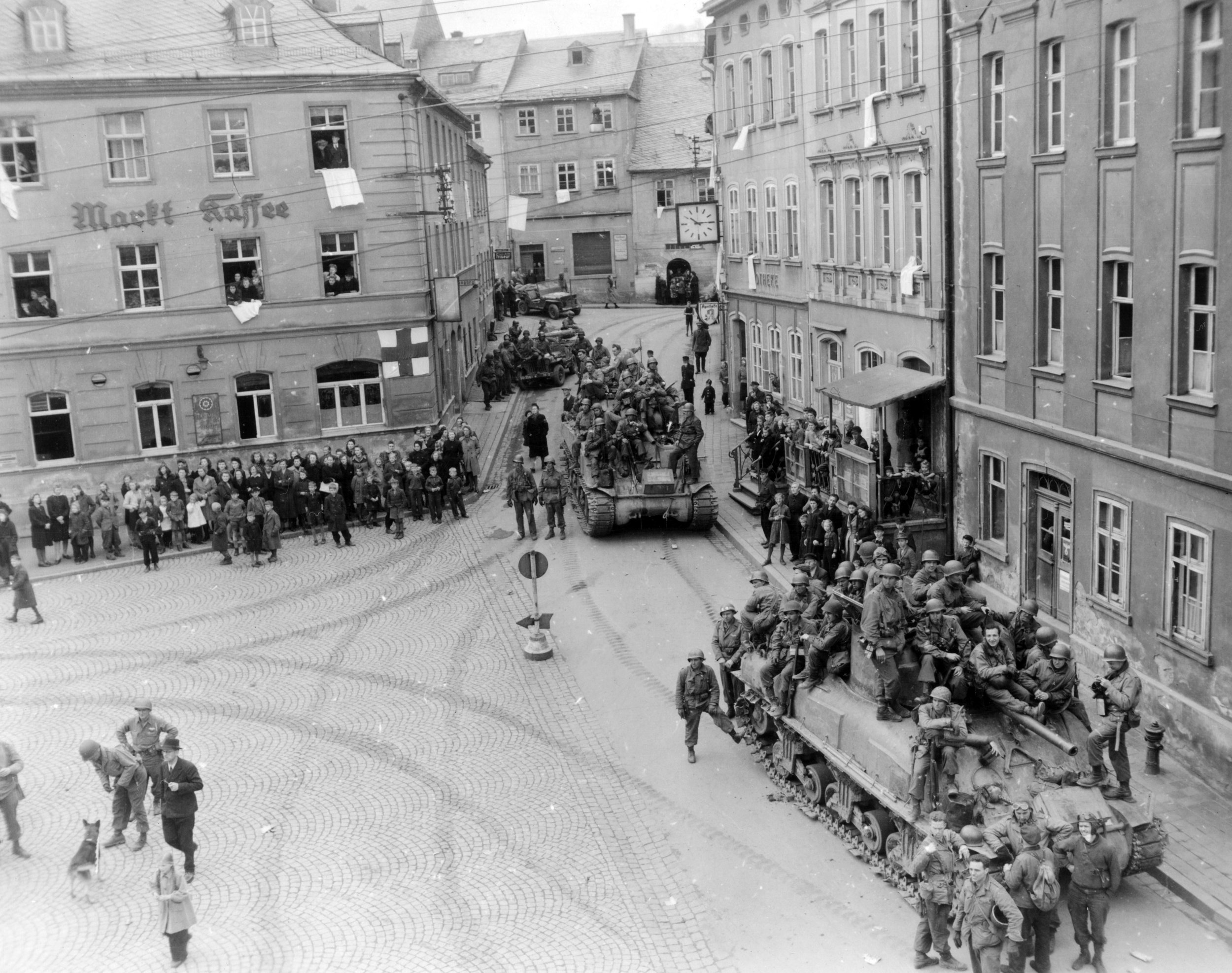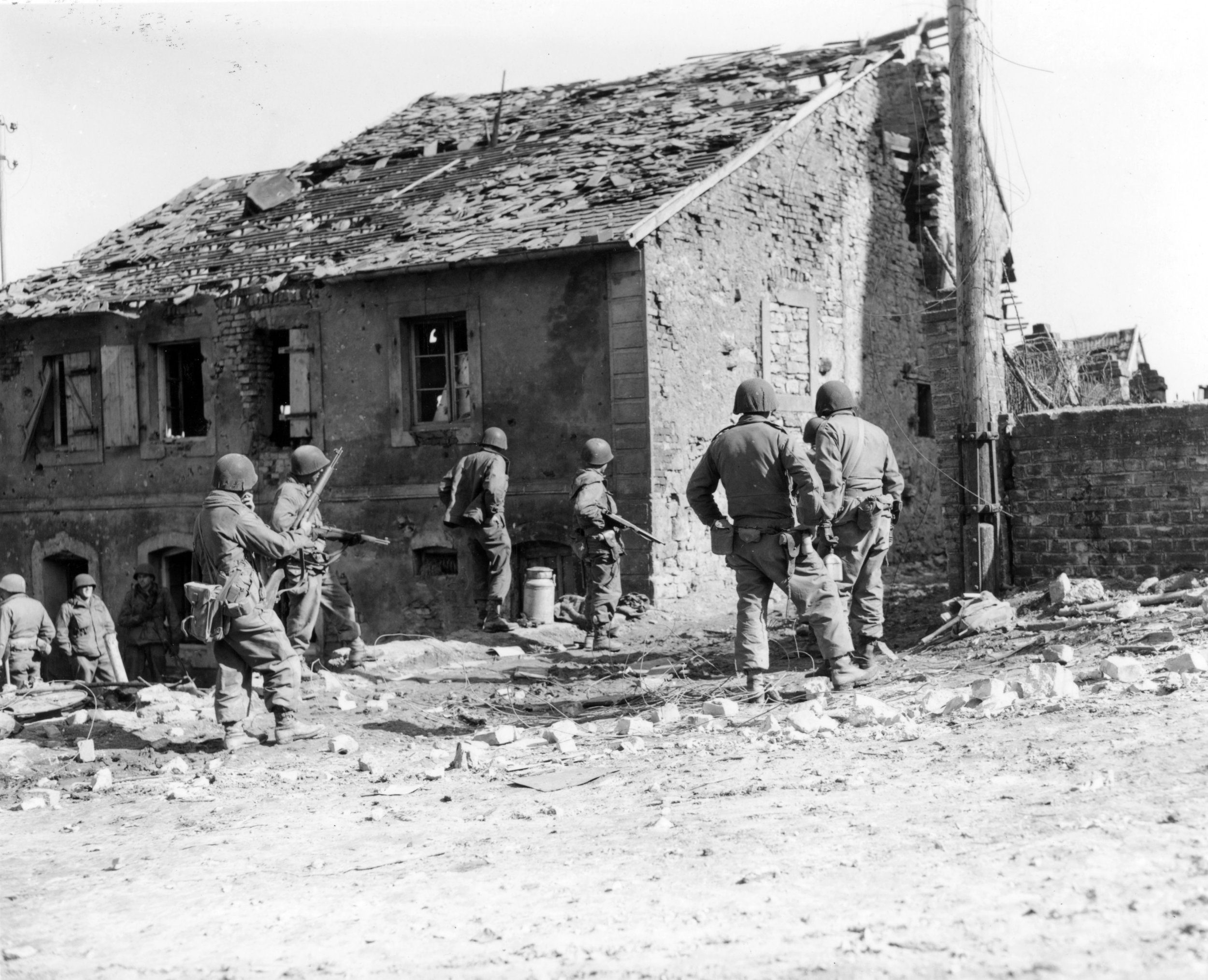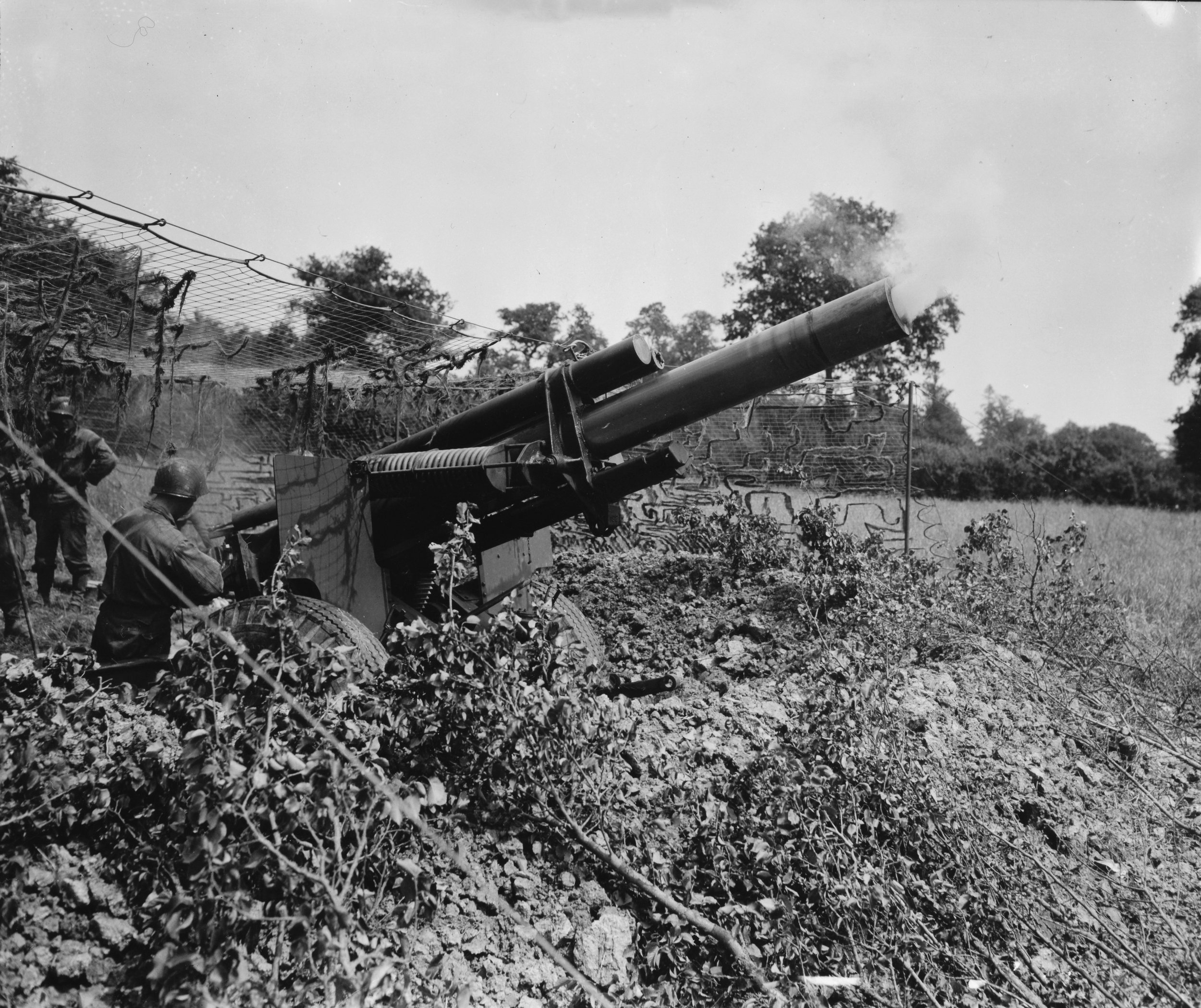
Morning Reports
Morning Reports were created by each battalion and regiment while the division was active during World War II. The Morning Reports contained important information from each day, such as promotions or changes in command, the location of the unit, or the major movements or activities of the day. Each unit in the division started their Morning Reports while they were training in the United States, and the major events of training and the unit organization were dictated in the reports. Some unit’s Morning Reports are more detailed than others while the 103rd was in the U.S. however, many of the major movements and their dates are the same or similar.
Once the division arrived in Europe, the Morning Reports shifted their focus to plot their daily locations and document the major events of each day. The information that was documented once the division landed in Europe differed based on the responsibilities of each unit. Some units that worked to support the infantry and frontline troops have more documentation about individual soldiers. Front line units on the other hand typically only documented their location, major events of the day, and important information about their leadership in their reports. The Morning Reports are also color coded to help readers and researchers with their work:
Red- Location of the Unit
Black- Information about the personnel of the unit
Blue- Record of events (movements, attacks, defense set up, important events of the day, etc.)
For more information and to help with reading and understanding the Morning Reports, please refer to the specialized Morning Reports Glossary.
-

409th Infantry Regiment
-

410th Infantry Regiment
-

411th Infantry Regiment
-

382nd Field Artillery Battalion
-

383rd Field Artillery Battalion
-

384th Field Artillery Battalion
-

928th Field Artillery Battalion
-

328th Medical Battalion
-

328th Engineers Battalion
-

103rd Signal Company
-

103rd Quartermaster Company
-

103rd Headquarters
-

103rd Reconnaissance Company
-

103rd Artillery
-

103rd Counterintelligence Corps Detachment
-

103rd Special Troops
-

803rd Ordnance (Light Maintenance) Company
-

103rd Military Police Platoon
-

103rd Infantry Division Band
Photo Credit: T/4 James A. Ryan, SC 335315- Infantrymen load up on tanks of 90th Division, 3rd U.S. Army, in Lobenstein, prepared for new objectives. 14 April, 1945. U.S. Army Signal Corps Archive via Flickr.
409th Infantry Regiment photo: T/4 Irving Leibowitz, SC 337382- Here, an enemy machine gun opens up from the far side of the valley. Both men watch intently, trying to spot it. (409th Infantry Regiment). German/Austrian border. 1 May, 1945 U.S. Army Corps Archive via Flickr.
410th Infantry Regiment photo: T/4 Clifford O. Bell, SC 270822- Infantrymen of the 79th Division file into columns down street of newly-captured town of Soufflenheim, France. 13 December, 1944. U.S. Army Signal Corps Archive via Flickr.
411th Infantry Regiment photo: T/5 Joseph A. Bowen, SC 270629- 7th U.S. Army infantrymen of the 7th Inf. Regt. (3rd Infantry Division) prepare to rush a house in which Nazi snipers are hidden. Guiderkirch, France. 15 March, 1945 U.S. Army Signal Corps Archive via Flickr.
382nd Field Artillery Battalion photo: Hartman, SC 396926- Members of Battery B, 328th F.A. Bn., 85th Div., firing their 105mm howitzer. Ramagnola area, Italy. 15 February, 1945. U.S. Army Signal Corps Archive via Flickr.
383rd Field Artillery Battalion photo: Graning, SC 396925- Reading his first mail since moving into frontline position is Sgt. John W. Carter of Gastonia, N.C., Battery C, 616th F.A. Vn., 10th Mtn. Cutigliano area, Italy. 31 January, 1945. U.S. Army Signal Corps Archive via Flickr.
384th Field Artillery Battalion photo: Poinsett, SC 364313- A 155mm howitzer of the 751st Field Artillery Battalion being loaded for a fire mission. Near Rotgen, Germany. 11 January, 1945. U.S. Army Signal Corps Archive via Flickr.
928th Field Artillery Battalion photo: Unknown photographer, SC 196055- A U.S. artilleryman loads a 105mm howitzer with a shell packed with D ration chocolate bars that is to be fired to soldiers of an infantry battalion cut off by the Germans in the Belmont sector, France. 29 October, 1944. U.S. Army Signal Corps Archive via Flickr.
328th Medical Battalion photo: T/4 Clifford Bell, SC 201691- Medics carry a wounded infantrymen into aid station of 103rd Division of 7th U.S. Army near Obermodern, France. Man was wounded by anti-personnel mine while on patrol. 27 February, 1945. (103rd Infantry Division) U.S. Army Signal Corps Archive via Flickr.
328th Engineers battalion photo: Cpl. Weintraub, SC 405144- Cpl. William C. Bruton, Graham, Texas, 347th Engineer Regiment, places sand bags with cement around to support a reconstructed railroad pier and to secure it from being smashed out. Sarralbe, France. 31 December, 1944. U.S. Army Signal Corps Archive via Flickr.
103rd Signal Company photo: Cpl. Weintraub, SC 334912- W.P.G. Lt. James Scoggins sits outside the cellar of the battalion switchboard on a wire spool in the front line town of Rimling, France, talking over communications problems and other duties of combat infantrymen with Lr. Robert Altier. 13 March, 1945. U.S. Army Signal Corps Archive via Flickr.
103rd Quartermaster Company photo: Unknown photographer, SC 179886- The baking school of the Quartermaster Group at Camp Mills, Ill., while teaching its men the use of the most modern camp and field baking equipment, also trains them to improvise ovens and other equipment in the event of such equipment being destroyed on the battlefield. S/Sgt. Joseph Perno, S/Sgt. William F. Post and Sgt. Philip Seitz operating a bank oven. 1943. U.S. Army Signal Corps Archive via Flickr.
103rd Headquarters photo: Horton, SC 195669- A U.S. Army infantry division sets up its headquarters in the boiler room of an old French mine near Trieux, France. 21 October, 1944. U.S. Army Signal Corps Archive via Flickr.
103rd Reconnaissance Company photo: Mastrosimone, SC 329773- Members of the 80th Reconnaissance Unit (80th Infantry Division) fall in line for doughnuts and coffee furnished from an American Red Cross Clubmobile in the vicinity of the Moselle River, France. 8 September, 1944. U.S. Army Signal Corps Archive via Flickr.
103rd Artillery photo: Franklin, SC 364298- A 155mm howitzer, also known as whispering death, of the 4th Infantry Division, throws another shell in the cracking German lines. Near St. Lo, France. 24 July, 1944. U.S. Army Signal Corps Archive via Flickr.
103rd Special Troops photo: Musae, SC 337205- Pvt. Bill Mels of Sheldon, Iowa, and Pfc. Ben Cole of Forest City, North Carolina, stand guard with an improvised shelter to shield them from the wintry blasts. Alsace-Lorraine, France. 26 November, 1944. U.S. Army Signal Corps Archive via Flickr.
803rd Ordnance (Light Maintenance) Company photo: T/5 Samuel Gilbert, SC 364538- T/4 Frank Usiak of Pittsburgh, Pa., 3rd U.S. Army (4th Armored Division), gives his .50 caliber water-cooled machine gun an overhaul near Echternach, Luxembourg. 23 February, 1945. U.S. Army Signal Corps Archive via Flickr.
103rd Military Police platoon photo: R. W. Crampton. SC 199105- German prisoners taken in the Ardennes sector by 3rd Armored Division are checked before being moved to cages. 14 January, 1945. U.S. Army Signal Corps Archive via Flickr.